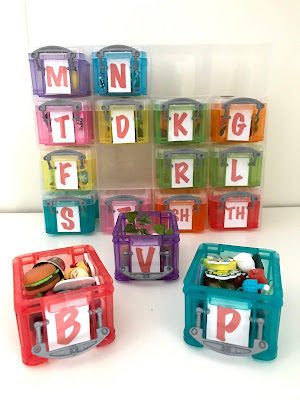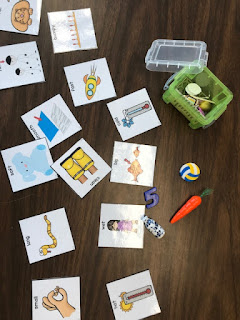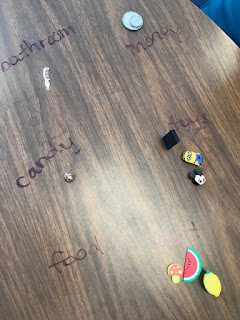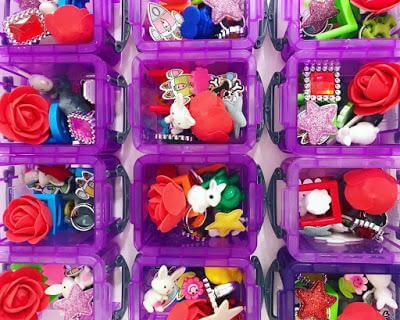
I Used Mini Objects Every Day in Speech Therapy: Part Two
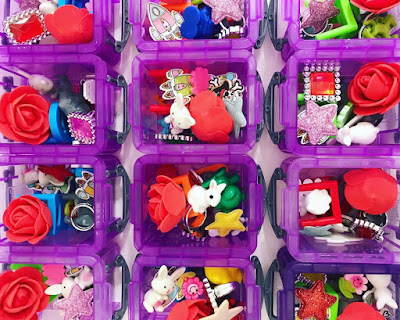
I'm back again with more engaging ideas for mini objects in speech therapy! To find my first post, click here, Otherwise, keep reading to find out how I used mini objects for an entire week (yes, for every goal) in my speech room! (Picture Credit: Speech Tree Co)
First off, here are the mini objects my sweet friends over at Speech Tree Co sent me:
Okay okay, let's jump again into the real reason for this post.
Language
There are obviously SO many ways to address language using mini objects, especially when you consider the vast number of pieces you get in a set! Let me separate some ideas by specific areas:
Describing
I consider this a sort of a higher level describing task. I use it with my students that have a lot of the vocabulary for describing, but need reminders to elaborate more than just "something yellow and smooth." I pull out this describing wheel from The Dabbling Speechie, pictured below:
Then, we simply pull out some of our mini objects and begin describing! I like to make it a challenge by telling my students "get me to three!" Basically, we each hide the item we have, and try to give three really great descriptions for one object in order to get a peer to guess the item. The kids love making it a challenge! And sometimes, for fun, I let them work together against me. They LOVE beating me 😉
If your students need a little more help describing using specific adjectives, I use the mini objects with these adjective cards from Live Love Speech.
This student is working on describing various objects, including the carrot and a ball, using the specific adjective cards. I can get SO much more language from my students when I help them along with visuals #obsessedwithvisuals
Vocabulary
It can be so hard to begin teaching students how to categorize items when they're first learning vocabulary. Having a mini object to see, feel, and hold is so much more tactile than a simple 2D picture of items. In the image below, I pulled out a mini object and my student named the category. I quickly wrote it on the table, and we began sorting. So simple and engaging!
Working on compare/contrast? Take two mini objects, draw a quick Venn Diagram on your table or whiteboard, and simply begin talking! Watermelon and lemon? How are they similar? How are they different? I like to take pictures of our notes so that we can review them again next time I have those students in speech. Plus, my kids LOVE taking pictures of their work!
Sometimes, I like to pull out a random item and start asking questions like, "what group does this belong in?" "What is something else you can think of that would belong in this group?" "Who would use this item?" "Why would we use this item?" etc. It amazes me how long of a discussion I can have with students over one mini trinket! I often notice more generalization when I can match the vocabulary to the actual tactile item.
If you're working on synonyms and antonyms, grab some objects ahead of time that would be great for a discussion relating to the goal. For example, with the object "ball,": what are two meanings for this word? My students that are just beginning this skill really benefit from having the item as a visual cue when coming up with one of the definitions.
Retell
Once you have time to really dig through your mini items, you may be able to find some books that associate with the items. This REALLY helps my students with retell. For example, there are some GREAT mini objects to use with the story Dragons Love Tacos!
Misc
Here are some random ways I like to use mini objects in no prep therapy!
Game pieces!

Fill Ned's Head with mini objects that target the goal you're working on, instead of the items included in Ned's head!


